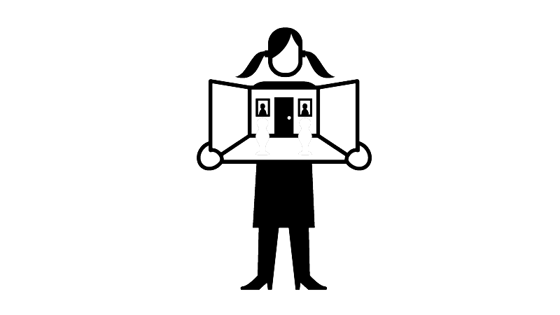Games
Level designer
Also known as: Lead level designer

What does a level designer do?
Level designers understand what makes good gameplay. They design the game – but only a portion of it, normally referred to as a ‘level’. They take the specification defined by the gameplay designer, and get into the detail - the actions, events, objects and environment. They also design the characters and the ways they behave.
The level designer first sketches ideas on paper or using 2D drawing software. They imagine the playing experience, putting themselves in the position of the player, mapping out all the possibilities. They need to think about the logic and flow of events and actions, the conditions that need to be met for certain things to happen and the challenges the player will encounter.
Watch
- Careers in video games: level designer (Jacob, Ubisoft) - one minute mentor
- Careers in video games: lead level designer (Stuart, Ubisoft) - one minute mentor
- Matthew Lourdelet, level designer at Radiant Worlds
- Day at work: Video game designer
What are level designers good at?
- Creativity: come up with new challenges and missions
- Knowledge of gameplay: imagine the game, see it visually and develop the gameplay mechanics
- Knowledge of programming: understand programming, have some scripting language competence
- Physics: understand how objects respond according to the laws of physics
- Art: have a strong spatial awareness with 2D and 3D design skills
- Communication: work with other artists and the design team and share the vision with games developers
Tools of the trade
These are the some of the tools used by professional level designers, but you can develop your skills using free software. Go to build your games portfolio for a list.
- Graphics software (Photoshop, Adobe After Effects, Illustrator, Dreamweaver)
- 2D and 3D animation software (Blender, Maya, 3DS Max)
- Game Engines (Unity, Unreal Engine)
- Programming languages (C#, C++, Python)
Who does a level designer work with?
Level designers usually reports to the gameplay designer. They train the testers to play the game and also work closely with artists and programmers.
How do I become a level designer?
At school or college:
This is a role where both art and science are useful.
If you want to go to university, take A-levels, Highers, Level 3 BTECs or UALs in a combination of arts and sciences from the following subjects:
- Art
- Art and design
- Graphic design
- Graphic communication
- Computer science
- Mathematics
- Physics
- Creative digital media production
If you want to go straight into a job or apprenticeship, the following Level 3 qualifications will be relevant:
- Aim Awards Diploma/Extended Diploma in Games Animation and VFX
- BTEC Diploma in Graphics
- BTEC Diploma in Digital Games Design and Development
- BTEC Diploma in Computing for Creative Industries
- UAL Diploma/Extended Diploma in Art and Design
- AQA Technical Level Entertainment Technology: Video Games Art & Design Production
- OCR Technical Diploma in Digital Media (Digital Content for Interactive Media)
- UAL Diploma/Extended Diploma in Creative Media Production & Technology
- AQA Technical Level IT: Programming
- OCR Technical Diploma in IT (Digital Software Practitioner)
Play games:
Play lots of different games. Think about how the levels and the design of them.
Build a portfolio:
Create work that you can show off to employers. This is essential. Go to build your games portfolio to learn how.
Start modding:
Create levels of a game using software provided by the publishers.
Look for an apprenticeship:
At the moment, you’re unlikely to find apprenticeships for level designers specifically. However, it might be possible to find an apprenticeship as a junior 2D artist. It might be worth taking that up, whatever industry, and then moving into games and level design from there. Check out What’s an apprenticeship? to learn more about apprenticeships and find an apprenticeship to learn how to find one in your region, or approach companies directly. Go to ScreenSkills information on games apprenticeships for the main apprenticeship schemes in games.
Get a degree:
Most people in the games industry have a degree. Get one in games art, graphic design or any 3D digital art. Have a look at ScreenSkills’ list of recommended courses in games. We recognise courses with our ScreenSkills Select award where they offer training in the relevant software, dedicated time to building a portfolio and have strong links with the games industry.
Network:
Get to know people in the games industry by attending events, including games conferences and expos. Meet professionals and ask them questions about their work, while demonstrating interest and knowledge in the industry. Offer to provide them with your professional contact details and try to stay in touch with them. Go to how to network well to learn how to do this.
Search for jobs:
Use the UK Games Map to find out if there are games companies near you, then go to their websites directly and check out their open roles. Even if they are not advertising the right role, if you like a specific company it’s worth emailing them to let them know you are looking in case something suitable comes up in future. Some employers will take on a junior level designer if they have a strong portfolio, showing creativity, flair and software skills.
You might also be interested in…
Being a lead games designer, 3D modelling artist or an environment artist in the games industry. You might also be interested in being a production designer in the film and TV drama industries, a look development artist, modelling artist or an environment artist in visual effects (VFX), or an art director, modeller or background designer in the animation industry.






